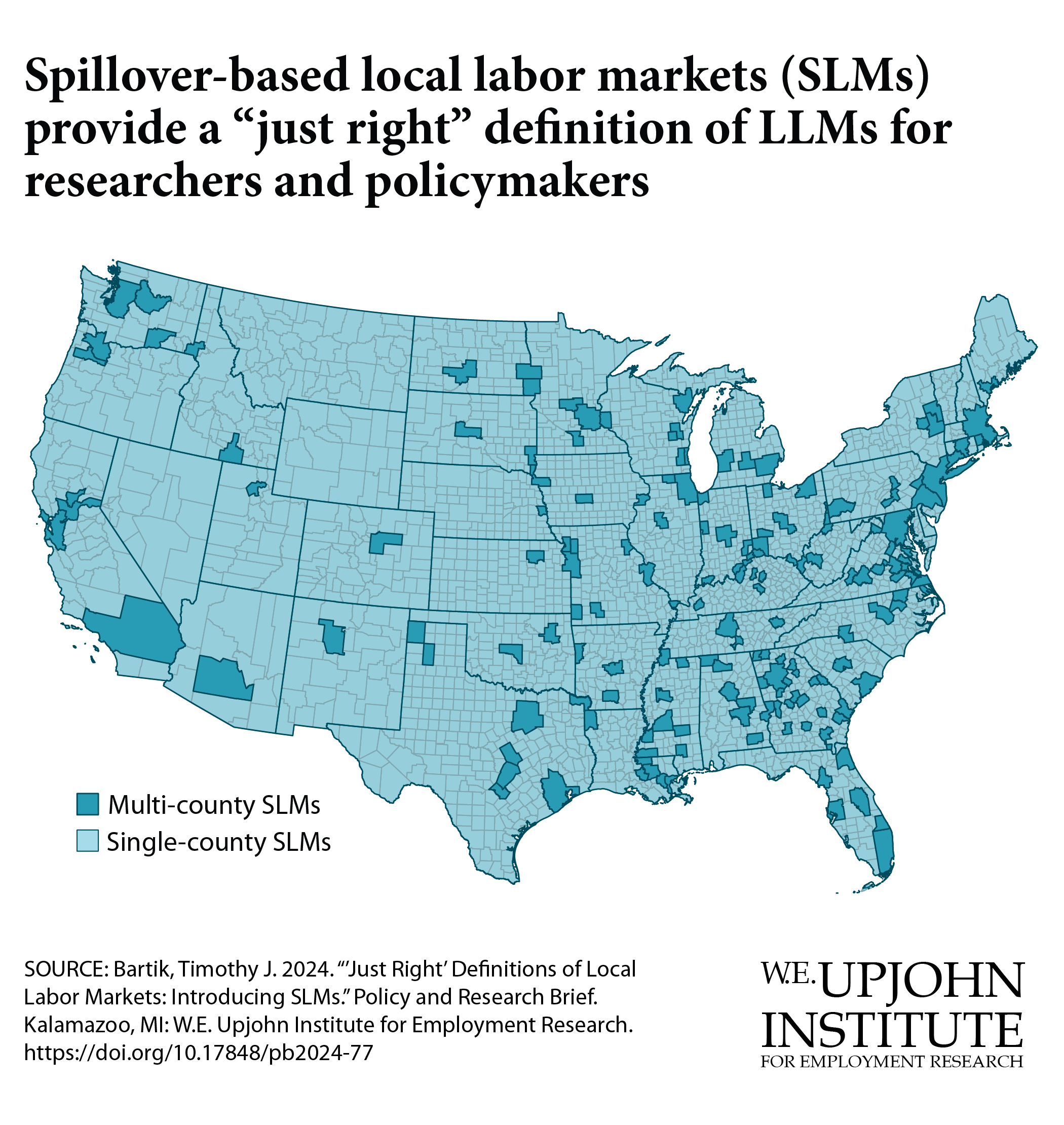Research from Upjohn Institute Senior Economist Tim Bartik has shown why and how to target economic development policies to distressed areas, but policymakers often bump into a problem: official definitions of local labor markets are too big or too poorly drawn, which limits their usefulness. These problematic definitions make it harder to accurately identify and target policies at distressed areas.
New research aims to change this. In a paper and policy brief, Bartik introduces definition based on how a change in jobs in one county “spills over” into neighboring counties: spillover-based local labor markets, or SLMs — pronounced “slims.” Whereas a Metropolitan Statistical Area or a Commuting Zone might include anywhere from a handful of counties to a dozen or more, SLMs tend to be slimmer, perhaps containing a few counties or just one. On the other hand, SLMs sometimes put together closely tied counties that are separated by official metropolitan area definitions.
The key is how counties respond to job losses and gains in neighboring counties. If, say, a factory opening boosts employment in a nearby county, those counties would share a SLM. If not, the counties belong to separate SLMs.

Bartik provides the example of Detroit, in Michigan’s Wayne County, and its suburban neighbor, Oakland County. Jobs created in Wayne County raise Oakland County’s employment rate almost as much as if the jobs were created within Oakland County itself, and vice versa. Because of this, Bartik writes, the counties would be better off cooperating to create jobs anywhere within the SLM instead of competing to bring them to their own turf.
That’s not the case everywhere, however. Some counties have weak effects on each other but are grouped together in other local labor market measures. Bartik’s definition splits or moves these into separate SLMs.
If researchers use data from overlarge areas that include less-affected counties, they’ll underestimate the effects of job growth on local increases in employment rate or wages. Policies meant to help distressed areas can also miss their targets if policymakers create jobs in a county too disconnected to meaningfully affect other counties in the distressed area.
Despite being “slimmer” than other methods defining local labor markets, SLMs still capture most of the labor market spillovers and commuting patterns: 78 percent of the former and 87 percent of the latter. Using smaller areas can support tighter-targeted policies.
It also puts labor-market definitions more in line with the official local planning regions governments already use.
Bartik describes the research as a first step toward better local labor market definitions. He invites researchers to test his conclusions and for policymakers to try out the SLMs to see if they prove useful to their work.

